| Size | 4" Pot (Quart), Gallon, 2 Gallon, B&B (1.5-2 ft.), B&B (2-2.5 ft.), B&B (2.5-3 ft.), B&B (3-3.5 ft.), B&B (3.5-4 ft.) |
|---|---|
| Type | |
| Native? | |
| Zone | 6, 7, 8 |
| Height Range (ft.) | 6.00 to 8.00 |
| Spread (ft.) | 6.00 to 8.00 |
| Growth Rate | |
| Bloom Time | |
| Bloom Description | Green |
| Sun | |
| Water | |
| Maintenance | |
| Suggested Use | |
| Soil pH requirements | Acidic, Neutral, Slightly Alkaline |
| Soil Type | Clay, Loamy, Sandy |
| Other |
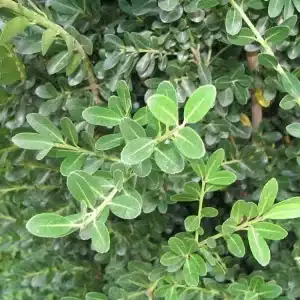
Buxus sempervirens, or Common Boxwood, is a non-native evergreen shrub prized for its dense, glossy foliage and use in formal hedges and topiary designs.
$12.99 – $411.99
Please note: Sizes 1.5 Gallon and up can’t be shipped outside the counties of Nassau, Suffolk, and Queens.
Learn more about how the process works and how our plants are delivered.
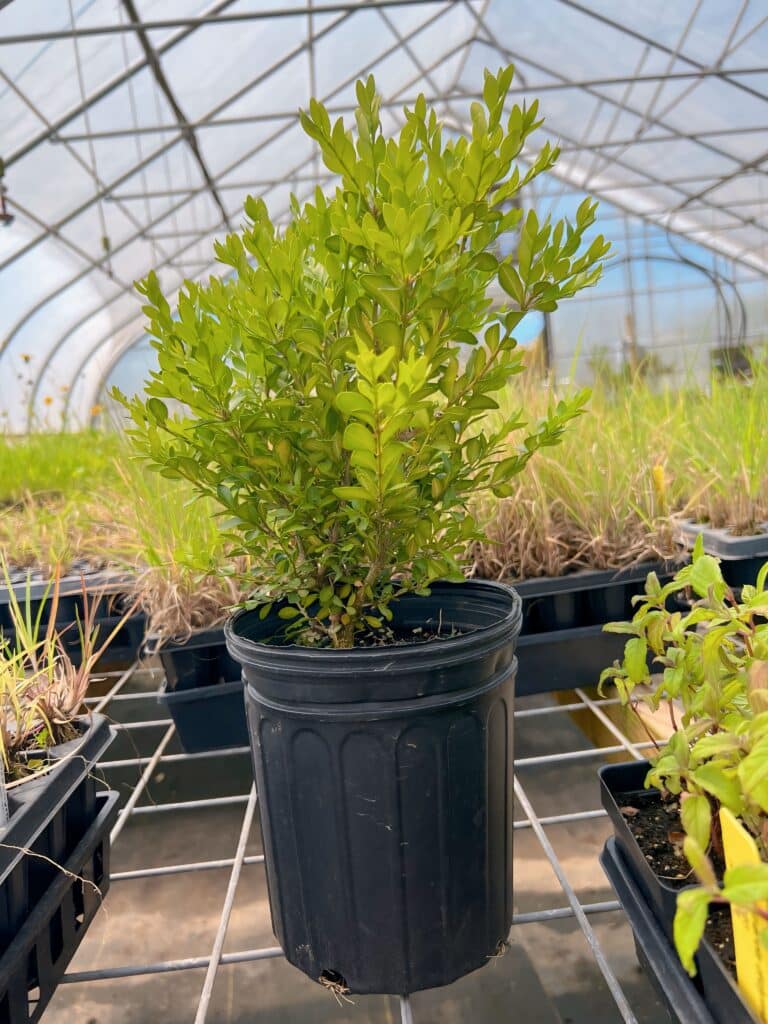

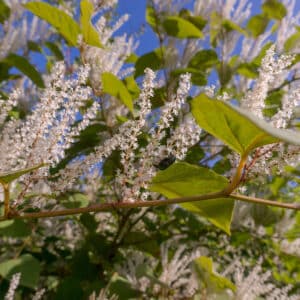
| Size | 4" Pot (Quart), Gallon, 2 Gallon, B&B (1.5-2 ft.), B&B (2-2.5 ft.), B&B (2.5-3 ft.), B&B (3-3.5 ft.), B&B (3.5-4 ft.) |
|---|---|
| Type | |
| Native? | |
| Zone | 6, 7, 8 |
| Height Range (ft.) | 6.00 to 8.00 |
| Spread (ft.) | 6.00 to 8.00 |
| Growth Rate | |
| Bloom Time | |
| Bloom Description | Green |
| Sun | |
| Water | |
| Maintenance | |
| Suggested Use | |
| Soil pH requirements | Acidic, Neutral, Slightly Alkaline |
| Soil Type | Clay, Loamy, Sandy |
| Other |
Buxus sempervirens, commonly known as Common Boxwood, is a dense, slow-growing broadleaf evergreen shrub widely used in formal gardens and foundation plantings for its small, glossy green leaves and excellent tolerance of shaping. This non-native species typically grows 3 to 6 feet tall and wide but can be maintained in a variety of sizes and shapes through pruning. Its compact growth habit and evergreen foliage make it ideal for low hedges, topiary, and edging along paths or borders. While valued for its visual appeal and versatility, Common Boxwood provides little support for native insects or wildlife and is vulnerable to boxwood blight in some regions.
Formal structure: Excellent for topiary, edging, and clipped hedges
Evergreen appeal: Glossy green leaves maintain color year-round
Adaptable: Tolerates sun, shade, and a variety of soil conditions
Sun exposure: Best in part shade but tolerates full sun with adequate moisture
Soil needs: Prefers well-drained, slightly alkaline to neutral soil
Maintenance: Regular pruning keeps its shape; mulch and monitor for pests and disease
Foundation beds: Classic look for lining homes and architectural features
Knot gardens and parterres: Popular in formal landscape designs
Container plantings: Works well in pots and planters for patios and entryways
Non-native species: Offers minimal food or habitat for native pollinators or birds
Susceptibility: Vulnerable to boxwood blight and leafminer pests in some areas
Better with natives: Pair with native shrubs to improve biodiversity and ecosystem health
Ilex glabra ‘Shamrock’ – Shamrock Inkberry: A compact native evergreen shrub with dark green foliage, ideal for borders and foundation plantings.
Ilex glabra ‘Compacta’ – Compact Inkberry: Dense and rounded with evergreen leaves, perfect for low hedging and wildlife-friendly landscapes.
Ilex opaca – American Holly: A taller native evergreen with red berries and glossy green foliage that supports birds and beneficial insects.
/5
Total reviews
|
|
Persons recommended this product
Anonymous
Shopper
check_circle Verified
Shop owner replied
Was this helpful
Anonymous
Shopper
check_circle Verified
Shop owner replied
Was this helpful
Your feedback helps us improve our service.
There are no reviews yet.
Be the first to review “ ”
Please log in to submit a review.
Only logged in customers who have purchased this product may leave a review
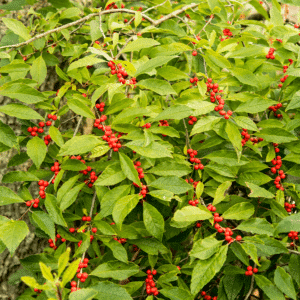
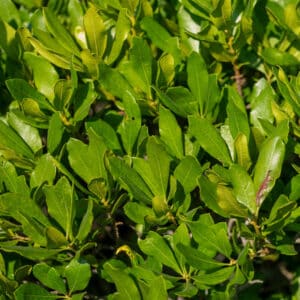

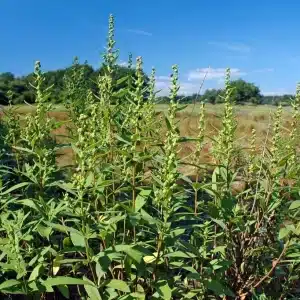
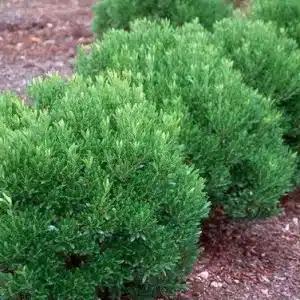
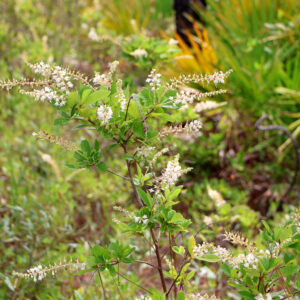
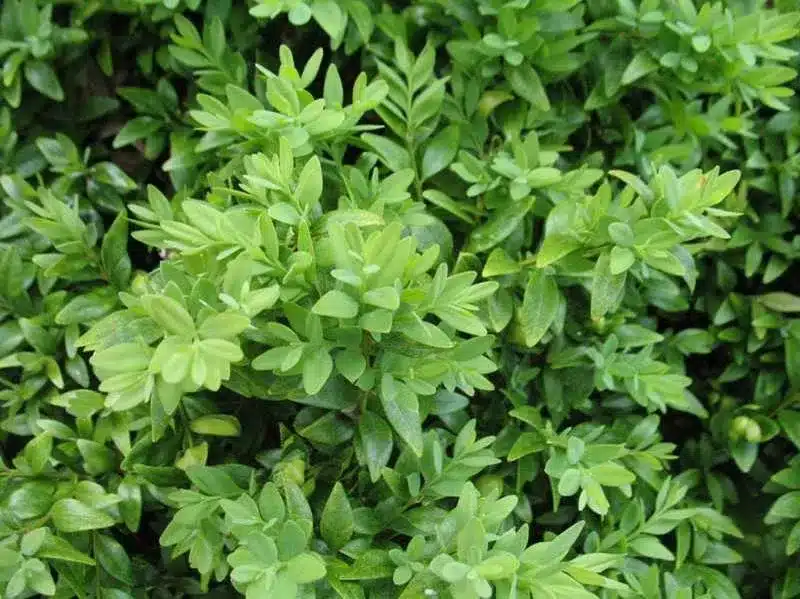
Common Boxwood thrives in partial to full sun and prefers moist, well-drained, slightly acidic to neutral soil. It does best with consistent moisture and benefits from mulching to keep roots cool and moist. Avoid planting in exposed winter wind or in poorly drained areas.
Buxus sempervirens can grow up to 15–20 feet tall and 10–15 feet wide if left unpruned, but is often kept much smaller through regular trimming. It is highly versatile and used in hedges, topiary, foundation plantings, and formal borders.
Boxwood responds well to pruning and can be shaped into hedges, spheres, or topiary. Prune in late spring to early summer after the first flush of growth. Avoid heavy pruning in late summer or fall to prevent winter damage to tender new growth.
Yes—Boxwood is highly deer-resistant. Its aromatic evergreen foliage is not palatable to deer or rabbits, making it a dependable choice for structural greenery in areas with browsing pressure.
While Boxwood is long-lived and hardy, it is susceptible to Boxwood Blight and Boxwood Leafminer, especially in hot, humid areas. Planting in well-ventilated areas, avoiding overhead watering, and selecting blight-resistant cultivars can help reduce risk.
Our gift cards make it easy to share the beauty of plants, flowers, and all things green. Whether for a special occasion or just because, give the gift of choice and let them select their favorites to create a garden they’ll cherish.
BUYING HIGH QUALITY PLANTS HAS NEVER BEEN EASIER
Our plants are easy to order, plant, and enjoy! Bringing pollinators to your property improves vegetable yields – Feed the bees!
Sign up for our email list!
Copyright © 2025 Bumbee’s | Web design and SEO by Searles Graphics